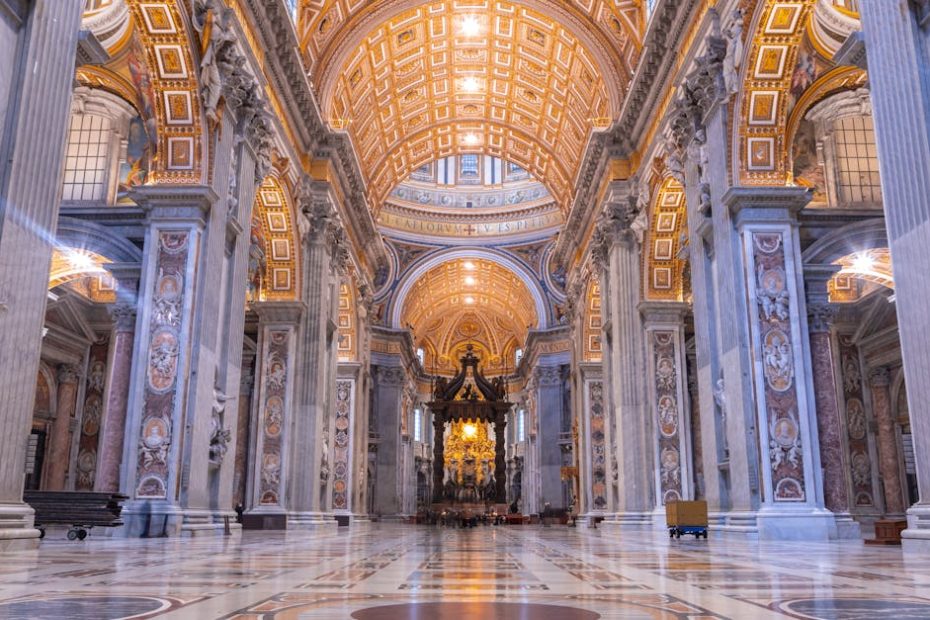Italy’s charm is undeniable, with its picturesque landscapes, rich history, and vibrant culture. If you’re dreaming of cobblestone streets, stunning architecture, and breathtaking vistas, Italy’s cities offer all that and more. From the romantic canals of Venice to the Renaissance splendor of Florence, each city has its unique allure.
Exploring Italy’s prettiest cities means diving into a world where every corner tells a story. Whether you’re captivated by Rome’s ancient ruins or enchanted by the cliffside beauty of Positano, you’ll find that Italy’s urban gems are a feast for the eyes and soul. Ready to discover the most beautiful cities in Italy? Let’s begin on a journey through some of the country’s most stunning destinations.
Key Takeaways
- Diverse Beauty: Italy’s cities, from Venice’s canals to Florence’s Renaissance art, offer stunning visual and cultural experiences that cater to a variety of interests.
- Historical Richness: Cities like Rome, Bologna, and Ravenna are treasure troves of historical landmarks, including ancient ruins, medieval towers, and Byzantine mosaics.
- Unique Neighborhoods: Discover the charm of Rome’s Trastevere, Florence’s scenic views, and Bologna’s vibrant market district, each offering unique local flavors and atmospheres.
- Cultural Highlights: Enjoy world-renowned cultural attractions such as Venice’s St. Mark’s Basilica, Florence’s Uffizi Gallery, and Verona’s Shakespearean connections.
- Culinary Delights: Savor Italy’s diverse cuisine, from Bologna’s tagliatelle al ragù to Naples’ famous pizza, and sample local specialties in charming restaurants and markets.
- Comfortable Accommodations: Find a range of accommodations from luxury hotels to budget-friendly hostels, ensuring a comfortable stay in every city.
Rome
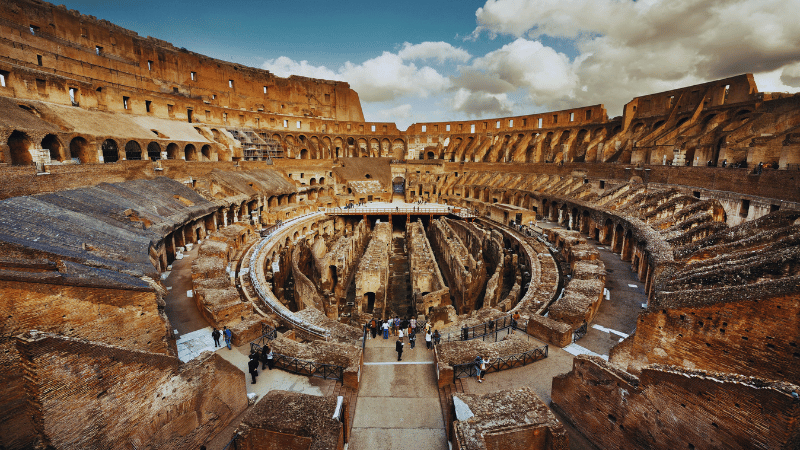
Rome, the capital of Italy, is an enchanting city that promises timeless beauty, rich history, and a vibrant cultural experience.
Historical Landmarks
Rome is a treasure trove of historical landmarks, each contributing to its breathtaking elegance:
- The Colosseum: This ancient amphitheater stands as a testament to Rome’s architectural ingenuity, once hosting gladiatorial contests and public spectacles.
- The Roman Forum: A sprawling archaeological site filled with remnants of ancient temples, basilicas, and public spaces, offering a glimpse into the heart of ancient Rome.
- The Pantheon: Remarkably preserved with its impressive dome, this ancient temple exemplifies Roman architectural innovation.
- The Sistine Chapel: Located within Vatican City, Michelangelo’s ceiling and altar wall frescoes make this chapel a masterpiece of Renaissance art.
Vibrant Neighborhoods
Rome’s neighborhoods each have a unique charm, making every stroll an adventure:
- Trastevere: Wander through narrow, cobbled streets lined with colorful houses, quaint cafes, and bustling piazzas.
- Monti: Trendy and bohemian, Monti is known for its vintage shops, hip cafes, and lively nightlife.
- Testaccio: Dive deep into Rome’s culinary heart with authentic trattorias, food markets, and some of the city’s best gelato.
- Campo de’ Fiori: By day, it’s a bustling market; by night, it transforms into a vibrant social hub.
Rome’s mix of historical grandeur and neighborhood charm ensures every traveler finds something memorable to experience.
Venice
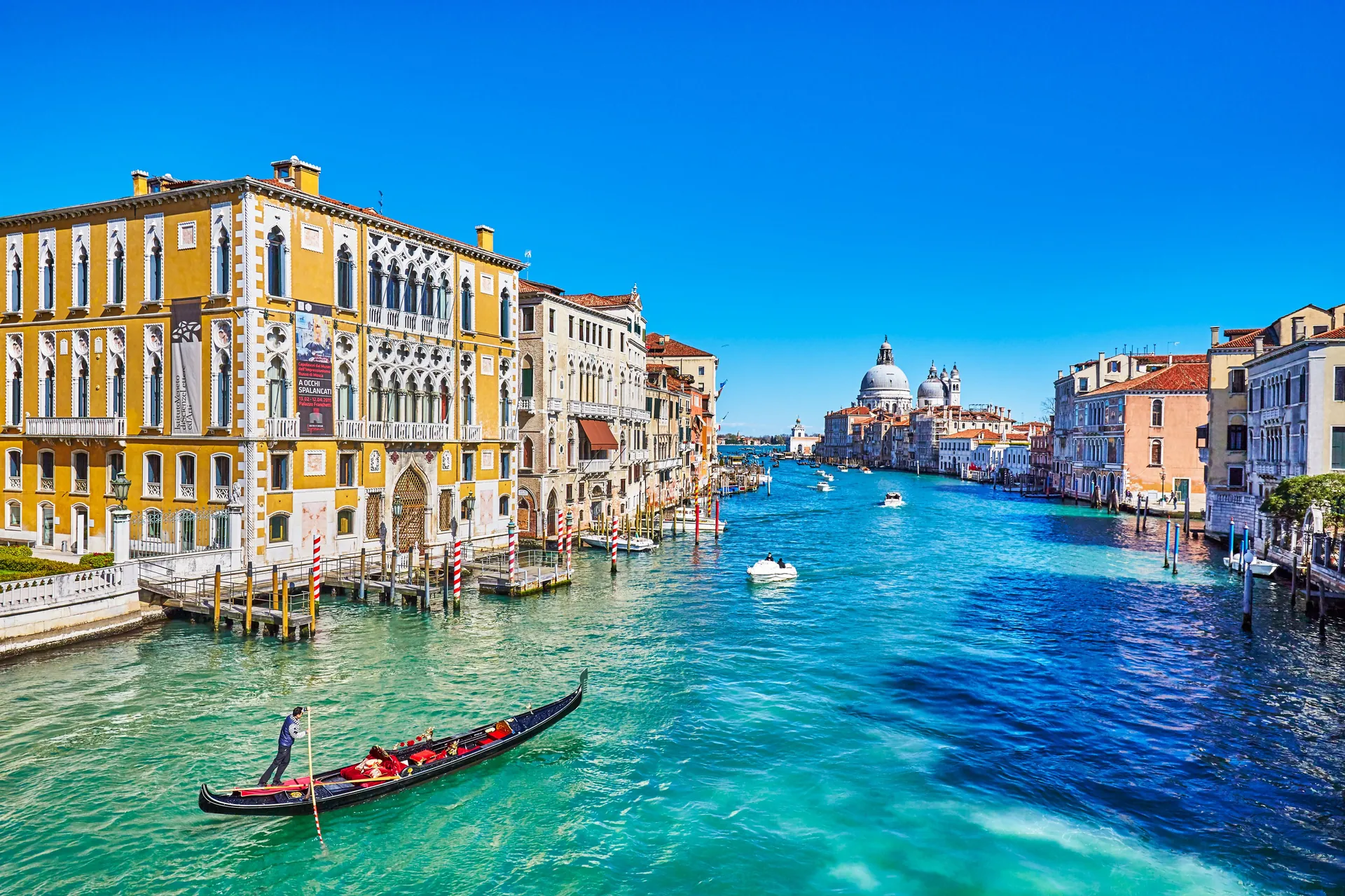
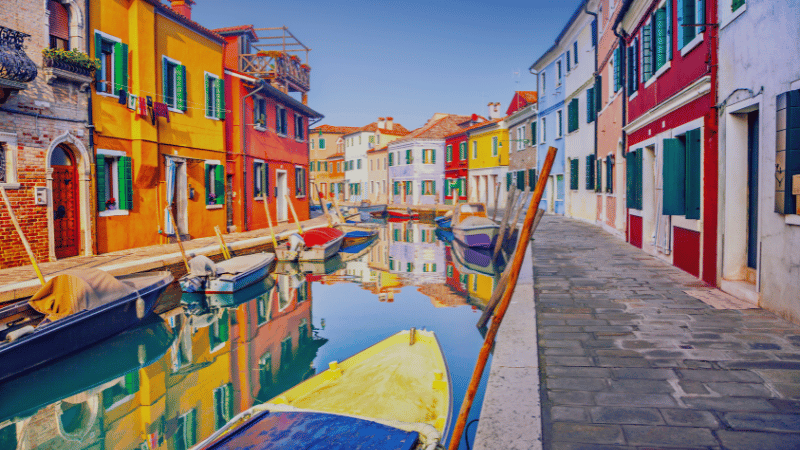
Venice, often dubbed one of Italy’s most stunning cities, offers an ethereal experience with its unique blend of historic charm and water-bound allure.
Iconic Canals
Venice’s iconic canals aren’t just pretty; they’re the lifeblood of the city. Built on over 100 islands and crisscrossed by more than 400 bridges, the canals create a picturesque network unlike any other. The Grand Canal stands out with its sweeping curves lined by historic palazzi and vibrant waterfront cafes. A gondola ride here reveals a kaleidoscope of sights, including the striking Rialto Bridge and the beautifully ornamented Ca’ d’Oro palace.
Architectural Marvels
Venice’s architecture is a visual feast, blending various styles harmoniously.
St. Mark’s Square
St. Mark’s Square, or Piazza San Marco, is the heartbeat of Venice. The square’s stunning landmarks are must-visits, each offering rich narratives of the city’s past.
- St. Mark’s Basilica: Gaze at the intricate Byzantine mosaics and shimmering golden domes that adorn this iconic cathedral. Its majestic Pala d’Oro—a gold altarpiece studded with precious stones—is a masterpiece of medieval craftsmanship.
- Doge’s Palace: Marvel at the Venetian Gothic elegance here. The palace, once the residence of the Doge of Venice, boasts grand halls, exquisite artwork, and the evocative Bridge of Sighs, linking the palace to an old prison.
Venice beckons with beauty at every turn, promising a magical journey through its timeless canals and architectural wonders.
Florence
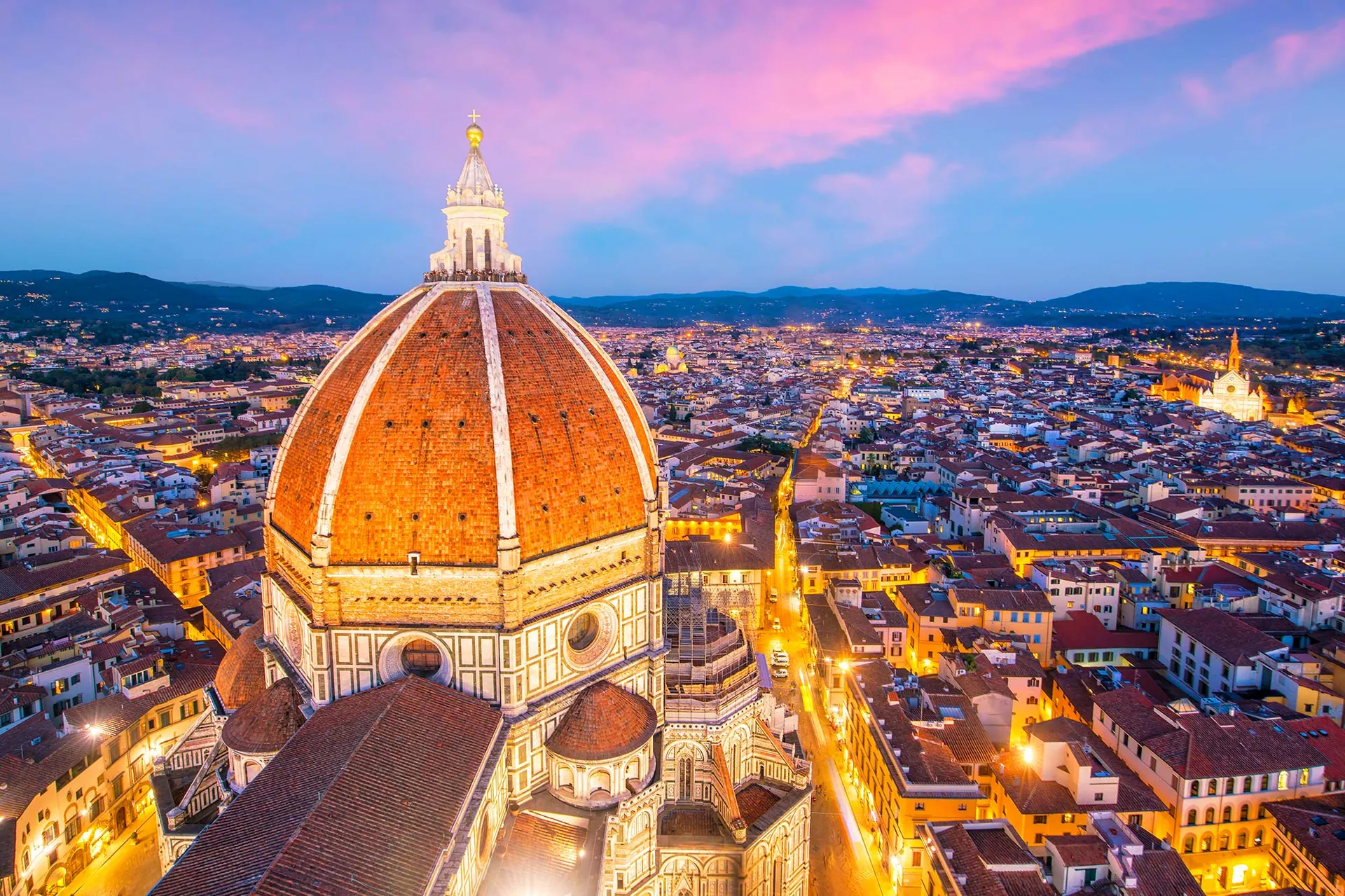
Florence is often heralded as the pinnacle of Renaissance beauty and history. Nestled in the heart of Tuscany, its vibrant cultural scene and rich artistic heritage attract millions of visitors annually. A city center declared a UNESCO World Heritage site, Florence captivates with a blend of world-renowned art, architecture, and scenic vistas, offering an unforgettable experience.
Renaissance Art and Architecture
Florence is the cradle of the Renaissance, boasting a rich collection of iconic masterpieces and architectural marvels. Here are some must-see attractions:
- Uffizi Gallery: One of the most famous art museums globally, it houses artworks by Botticelli, Michelangelo, and Leonardo da Vinci. You can marvel at “The Birth of Venus” and “Annunciation,” among other masterpieces.
- Palazzo Vecchio: This 14th-century town hall dominates Piazza della Signoria. It’s a testament to Florence’s medieval and Renaissance architectural grandeur. Don’t miss the Salone dei Cinquecento and its stunning frescoes.
- Duomo – Cathedral of Santa Maria del Fiore: Renowned for its iconic red-domed roof designed by Brunelleschi, climb to the top for breathtaking views of the city.
- Ponte Vecchio: An ancient bridge hosting a variety of quaint shops and providing picturesque views of the Arno River.
- Galleria dell’Accademia: Home to Michelangelo’s “David,” this gallery is a pilgrimage spot for art enthusiasts.
Scenic Views
Florence offers stunning views that serve as the perfect backdrop to its rich historical world:
- Piazzale Michelangelo: For panoramic views of Florence, this square is a must-visit. Take in the sight of the Duomo, Palazzo Vecchio, and the rolling Tuscan hills. Sunset here is particularly mesmerizing.
- Boboli Gardens: Behind the Pitti Palace, these beautifully landscaped gardens provide both tranquility and stunning views of Florence’s skyline.
- Fiesole: A quick trip from Florence, this small town offers views that stretch across the entire Arno Valley. Enjoy a peaceful escape with a historical twist, thanks to its ancient Roman theater.
- Giardino Bardini: A lesser-known gem, these gardens offer flora-filled paths and exquisite views of the city. Visit in spring for the full bloom experience.
In Florence, every corner hides a piece of history or a breathtaking vista, making it a diverse and deeply enriching travel destination.
Bologna
Often overlooked by travelers heading to more famous Italian cities, Bologna offers a unique blend of history, architecture, and culinary delights that can’t be missed.
Medieval Towers
Bologna’s skyline is dotted with medieval towers, once numbering over 180 but now reduced to around 20. The most iconic of these are the Two Towers—Torre degli Asinelli and Torre della Garisenda. Situated in the heart of the city, these towers offer both historical intrigue and breathtaking views of Bologna’s charming cityscape. You can climb the 498 steps of Torre degli Asinelli for panoramic views. It’s one of the few remnants that encapsulates Bologna’s medieval past, making it a must-visit.
Historic Center
Walking through Bologna’s historic center feels like stepping back in time. The cobblestoned streets and ornate facades tell stories of a rich past. Piazza Maggiore serves as the city’s central hub, surrounded by medieval and Renaissance buildings such as the Palazzo dei Notai and the Basilica di San Petronio. The fountain of Neptune, a masterpiece of Mannerist sculpture, adds to the character of this bustling square. Just a short walk away, you’ll find the Archiginnasio, the original seat of the University of Bologna, which is the oldest university in continuous operation in the world.
Bolognese Cuisine
If you think you’ve tasted Italian cuisine, wait until you sample Bologna’s offerings. Known as the gastronomic capital of Italy, Bologna is the birthplace of iconic dishes like tagliatelle al ragù (Bolognese sauce) and tortellini. Head to the historic Market District, Quadrilatero. Here, you’ll find bustling markets and food shops offering fresh pasta, cured meats, and local cheeses. For an authentic dining experience, visit Osteria dell’Orsa for some of the best traditional dishes in the city. Also, don’t miss trying mortadella, a cured pork sausage that’s best enjoyed with freshly baked bread.
Accommodations
Finding the perfect place to stay in Bologna can enhance your travel experience. Here’s a table comparing a few options:
| Accommodation | Type | Location | Price Range | Amenities |
|---|---|---|---|---|
| Grand Hotel Majestic | Luxury | City Center | $$$$ | Spa, fitness center, in-house restaurant |
| Aemilia Hotel | Mid-Range | Near Sant’Orsola Hospital | $$$ | Rooftop terrace, free breakfast |
| Buonhotel Bologna | Budget | Near Piazza Maggiore | $$ | Free Wi-Fi, complimentary breakfast |
Transportation & Practical Tips
Exploring Bologna is relatively easy. The city center is walkable, but buses and taxis are available. The Aerobus service connects Bologna Airport to the city center within 20 minutes. Renting a bike is another popular option, as it lets you explore the city’s porticoed streets and hidden alleys at your own pace.
- Best Time to Visit: Spring (April to June) and Fall (September to October) for mild weather and fewer tourists.
- Local Etiquette: Dress modestly when visiting churches and always greet shopkeepers with a polite “Buongiorno.”
- Sustainability: Bring a reusable water bottle; Bologna has numerous public fountains where you can refill it.
Whether you’re drawn by its rich history, architectural marvels, or mouth-watering cuisine, Bologna offers a diversity that caters to all types of travelers.
Siena
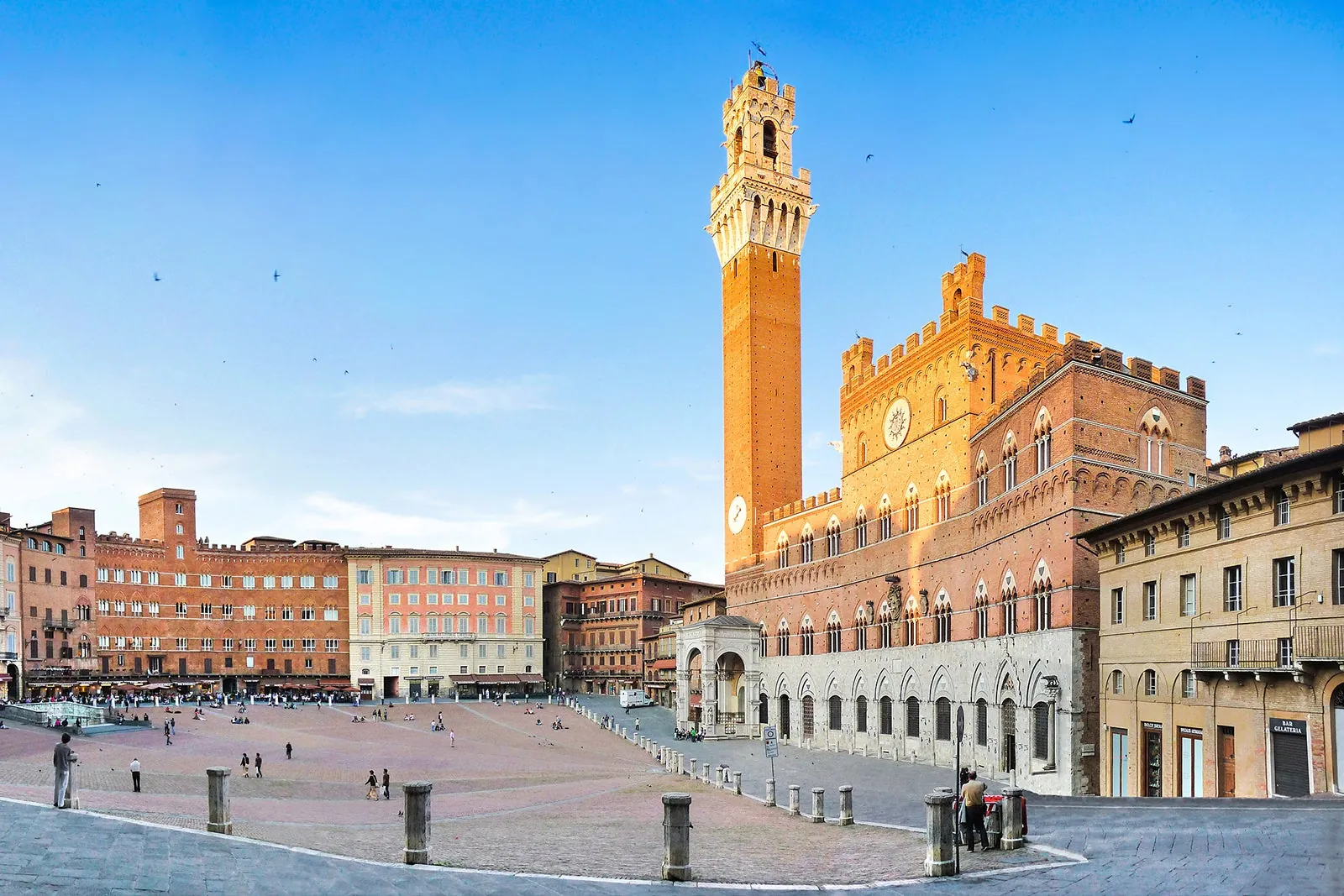
Set in the heart of Tuscany, Siena captivates with its medieval charm and picturesque world. This enchanting city, known for its narrow winding streets and vibrant piazzas, offers a blend of historical significance and architectural beauty.
Gothic Architecture
Strolling through Siena’s medieval town center, a UNESCO World Heritage Site, feels like stepping back in time. The Siena Cathedral, or Duomo di Siena, dazzles with its Gothic and Romanesque design. You’ll marvel at its intricate facade and striped marble columns. Don’t miss the climb up the Torre del Mangia; the panoramic views of the city and surrounding countryside are breathtaking. Another must-see is the Palazzo Pubblico, the town hall, showcasing grand Frescoes and stunning architecture.
Palio di Siena
Few experiences compare to witnessing the Palio di Siena. This thrilling horse race, held twice yearly, is a tradition that dates back to the 17th century. Each of Siena’s 17 contrade (districts) competes, creating an electric atmosphere. The race takes place in the Piazza del Campo, adding to the city’s medieval charm. If you plan to visit during the Palio, book accommodations early and prepare for vibrant parades, festive dinners, and a lively local crowd expressing their passionate neighborhood rivalries.
Top Attractions
- Piazza del Campo: This iconic square hosts the Palio and offers plenty of cafes and historical sites.
- Siena Cathedral: A masterpiece of Gothic architecture boasting stunning facades and interiors.
- Torre del Mangia: Climb for panoramic views of Siena and its lush surroundings.
- Palazzo Pubblico: Enjoy the medieval architecture and magnificent Frescoes.
Hidden Gems
Explore the quieter corners of Siena to discover hidden gems like the Piccolomini Library within the Cathedral, housing vibrant Renaissance Frescoes. Visit the Orto Botanico for a serene escape amidst diverse plant species. Wander through the Contrada museums to immerse yourself in the unique culture of each district.
Accommodations
Choosing the right place to stay can enhance your Siena experience. Here’s a comparison of some top accommodations:
| Accommodation | Type | Price Range | Key Features |
|---|---|---|---|
| Hotel Athena | 4-Star Hotel | $$ | Rooftop terrace, central location |
| Palazzo Ravizza | Historic Hotel | $$$ | Garden view, classical decor |
| Borgo Grondaie | Country Hotel | $$ | Rustic charm, tranquility |
| La Villa di STR | Boutique Hotel | $$$ | Art Deco style, personalized service |
Dining Highlights
Savor the flavors of Siena by dining at local favorites. Treat yourself to a meal at Osteria La Sosta di Violante, known for traditional Tuscan dishes. For a taste of Siena’s sweet specialties, visit Pasticceria Nannini and sample the Ricciarelli cookies and Panforte cake. The Enoteca I Terzi offers an excellent selection of local wines and cured meats.
Transportation & Practical Tips
Siena is best explored on foot, but buses are available for longer trips or when you’re tired. The city’s hilly terrain offers both challenges and rewards, so wear comfortable shoes. Consider visiting in spring or fall when the weather is mild and the crowds are fewer. Sustainability-minded travelers should seek out eco-friendly accommodations and dine at farm-to-table restaurants. Budget travelers will find that off-season visits provide the best value, with lower prices on accommodations and fewer tourists.
Jump into the heart of Tuscany by exploring Siena’s rich history, breathtaking architecture, and vibrant culture. This magical city ensures there’s always something spectacular to see or do, whether you’re gazing at Gothic masterpieces or experiencing the thrill of the Palio di Siena.
Verona
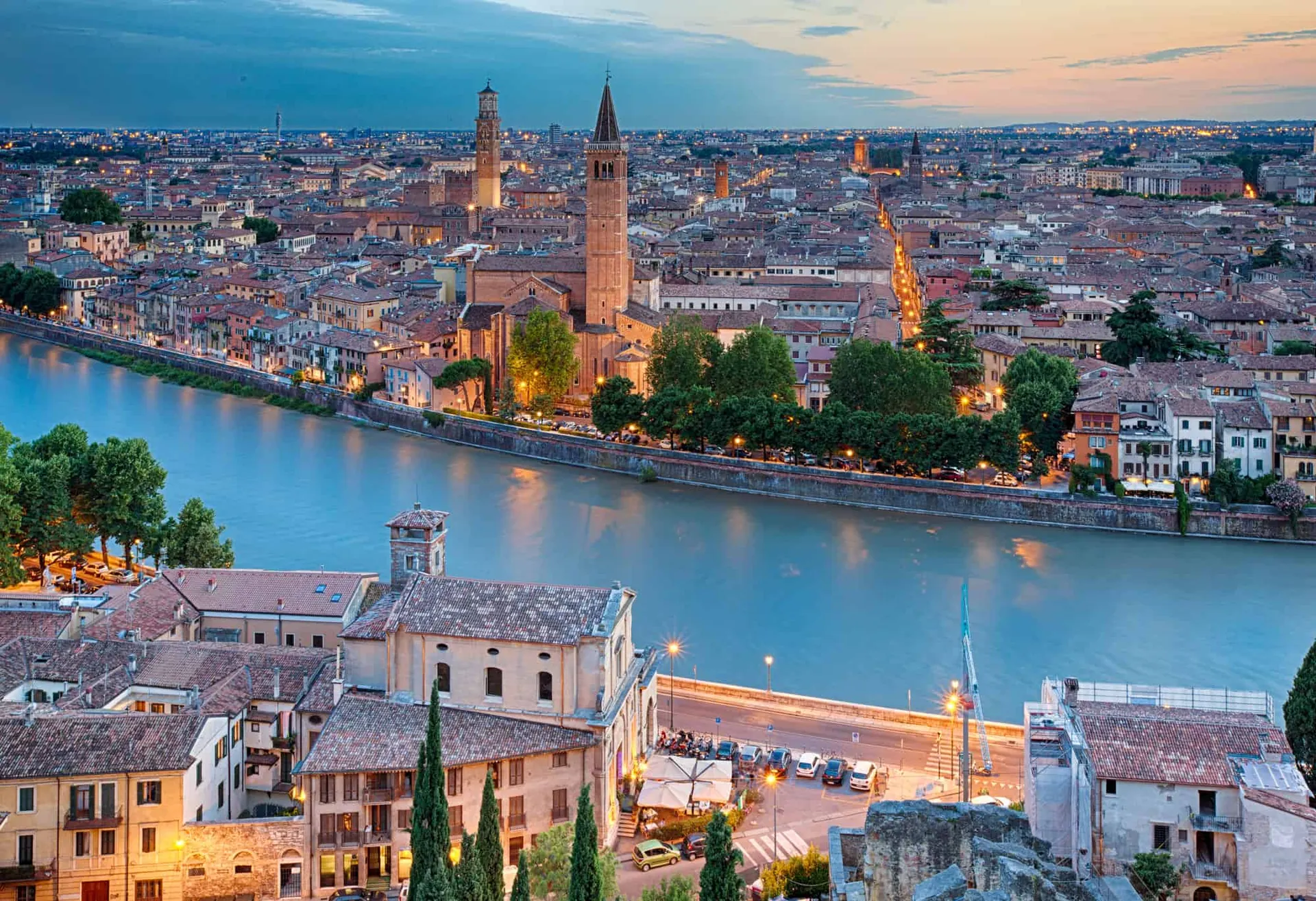
Verona, nestled in Northern Italy, is a city of romance, history, and stunning architecture. Its timeless beauty and literary fame make it a must-visit destination for travelers seeking an immersive Italian experience.
Romeo and Juliet
Verona is synonymous with Shakespeare’s Romeo and Juliet. You’ll find the Casa di Giulietta at Via Cappello 23, featuring Juliet’s iconic balcony. Visitors often leave love notes on the courtyard walls and take photos with the bronze statue of Juliet. Explore the museum inside the house to discover artifacts and exhibits related to the tragic love story.
Ancient Amphitheater
The Arena di Verona, a first-century Roman amphitheater, is one of the best-preserved ancient structures in Italy. Located in Piazza Bra, this iconic landmark hosts an annual summer opera festival, where you can enjoy world-class performances in a historical setting. Make sure to book your tickets in advance during the festival season, which runs from June to September.
Top Attractions
- Piazza delle Erbe: A lively square filled with market stalls, cafes, and historical buildings.
- Castelvecchio Museum: A medieval fortress housing a significant collection of art and artifacts.
- Ponte Pietra: A stunning Roman bridge offering picturesque views of the Adige River.
Hidden Gems
- Giardino Giusti: Renaissance gardens featuring manicured lawns, statues, and sweeping city views.
- Torre dei Lamberti: Climb the tower for a panoramic view of Verona’s rooftops and the surrounding hills.
- Basilica di San Zeno Maggiore: A beautiful Romanesque church with stunning frescoes and an impressive bronze door.
Accommodations
| Name | Type | Price Range (per night) | Key Features |
|---|---|---|---|
| Hotel Accademia | Luxury Hotel | $200 – $350 | Central location, elegant rooms, restaurant |
| B&B Verona Dreams | Bed & Breakfast | $100 – $180 | Cozy atmosphere, continental breakfast |
| Hotel Milano | Mid-range Hotel | $150 – $250 | Rooftop bar, close to Arena di Verona |
| Ai Ponti Verona | Boutique Hotel | $120 – $200 | Unique decor, friendly service |
Dining Highlights
- Trattoria al Pompiere: Enjoy local Veronese cuisine, such as risotto all’Amarone and bollito misto.
- Osteria del Bugiardo: Wine lovers will appreciate the extensive selection of local wines paired with delicious tapas.
- Antica Bottega del Vino: A historic wine bar offering a robust selection of Italian wines and traditional dishes.
Transportation & Practical Tips
Getting Around: Verona’s compact city center is easily navigated on foot. For longer distances, consider using buses, which are efficient and affordable.
Best Time to Visit: Spring (April to June) and Fall (September to October) offer pleasant weather and fewer crowds.
Local Etiquette: Italians value politeness; greet shopkeepers with a friendly “Buongiorno” or “Buonasera”.
Sustainability Tips: Use refillable water bottles to reduce plastic usage, as many public fountains provide fresh drinking water.
Verona’s rich cultural world, stunning landmarks, and romantic legends make it a captivating destination for any traveler.
Genoa
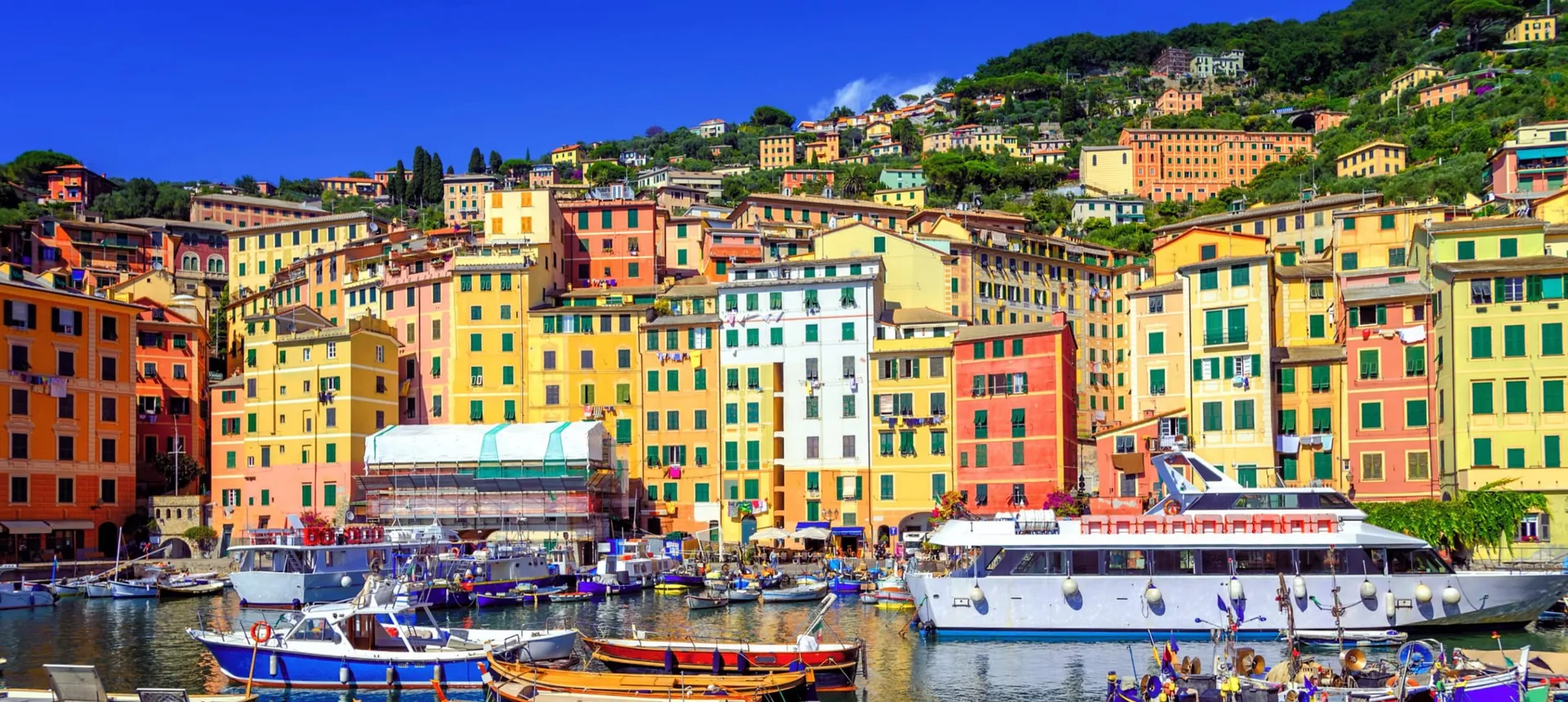
Though often overlooked, Genoa stands out for its unique blend of historical grandeur and coastal beauty. Nestled in the heart of the Italian Riviera, this port city invites you to explore its rich history, vibrant culture, and stunning architecture.
Port City Charm
Genoa boasts the largest intact medieval center in Europe, with flag-stoned alleys and charming piazzas. Walk through the narrow, atmospheric streets, and you’ll encounter the city’s ancient charm at every turn. Don’t miss Via Garibaldi, home to the stunning Rolli Palaces. These 150 UNESCO-listed Renaissance palaces were once the residences of Genoa’s powerful merchant class. Today, many serve as museums, schools, and public buildings, showcasing stunning art and architecture.
Ligurian Cuisine
Genoa offers a culinary journey that’s hard to match. Try the famous pesto alla genovese, made with fresh basil, garlic, pine nuts, Parmesan, and olive oil. Seafood lovers will enjoy dishes like trofie al pesto and pansotti in walnut sauce. Head to small, local trattorias where you can savor fresh, authentic Ligurian dishes. For a unique street food experience, grab a slice of farinata, a savory chickpea pancake, from one of the city’s many bakeries.
Lucca
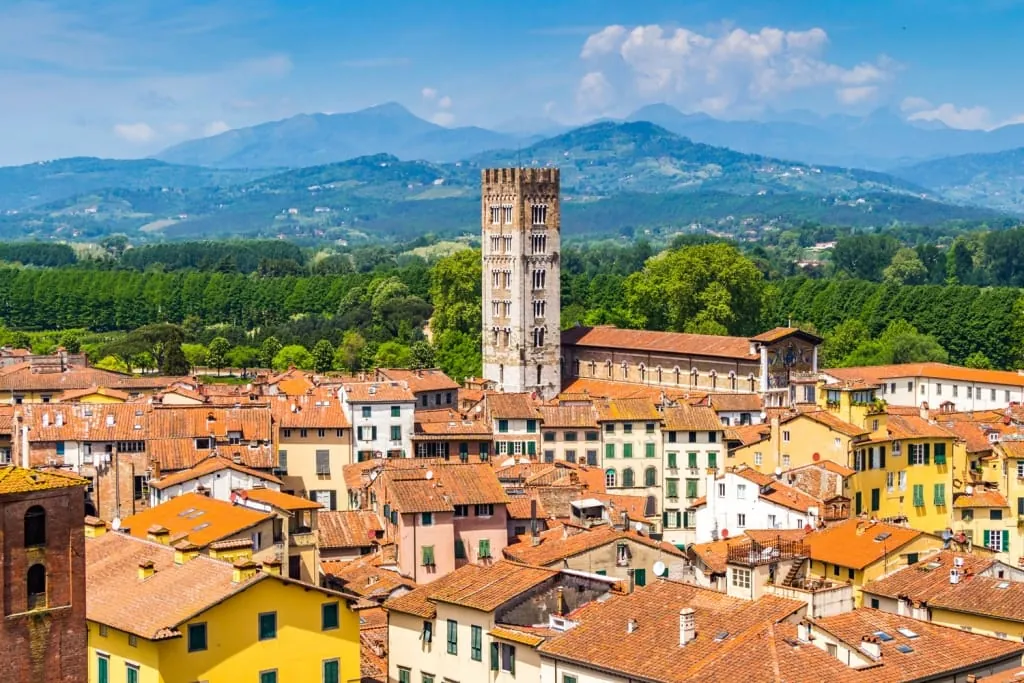
Nestled in the heart of Tuscany, Lucca is one of Italy’s hidden gems, renowned for its Renaissance charm and mesmerizing landscapes. Enjoy a mild climate year-round with peak visiting times from April to October.
Renaissance Walls
Encircling Lucca’s historic center, the 16th-century Renaissance walls are a marvel. These well-preserved structures now serve as biking and walking paths, offering an unparalleled way to explore the city. Stroll or cycle atop these walls to get sweeping views of Lucca’s picturesque streets and verdant gardens.
Picturesque Streets
Lucca’s streets are nothing short of enchanting. Known as the “city of 100 churches,” it boasts numerous historic churches, each exuding unique character. Amble down cobblestone paths lined with elegant palaces and elaborate churches, such as the Basilica of San Frediano and the Duomo di San Martino.
Top Attractions
- Piazza dell’Anfiteatro: A charming square built on the remains of a Roman amphitheater.
- Guinigi Tower: Iconic tower with ancient oak trees planted on its top, offering panoramic views.
- Casa di Puccini: The birthplace of composer Giacomo Puccini, now a museum.
Hidden Gems
- Via Fillungo: The main shopping street, brimming with boutiques and cafes.
- Orto Botanico di Lucca: A serene botanical garden perfect for a quiet retreat.
- San Michele in Foro: An impressive church with a distinctive facade and rich history.
Accommodations
| Accommodation | Price Range | Amenities | Proximity to City Center |
|---|---|---|---|
| Hotel Ilaria | $$ | Free Wi-Fi, Bike rentals, Pet-friendly | 5-minute walk |
| Albergo Celide | $$$ | Spa, Free breakfast, Free parking | 10-minute walk |
| B&B Antica Corte | $ | Free Wi-Fi, Garden, Family rooms | 15-minute walk |
Dining Highlights
- Trattoria Da Leo: Offers traditional Lucchese dishes, from hearty soups to succulent meat platters.
- Osteria Baralla: Located in Piazza dell’Anfiteatro, this restaurant is known for its homemade pasta.
- Forno a Vapore Amedeo Giusti: A historic bakery famous for its focaccia and sweet treats.
Transportation & Practical Tips
Most of Lucca is walkable, but cycling is popular due to its flat terrain. Public buses are available for longer trips. Consider visiting during the Lucca Summer Festival in July for concerts or in November for the Lucca Comics & Games, a popular comic convention.
Sustainable Tips & Budget Considerations
Opt for eco-friendly accommodations and dine at local trattorias to support small businesses. Save on travel by using public buses or renting a bike. For an affordable stay, consider visiting during the shoulder seasons in April or October.
Whether you’re a history buff, a foodie, or a leisurely traveler, Lucca offers an immersive and enchanting experience.
Turin
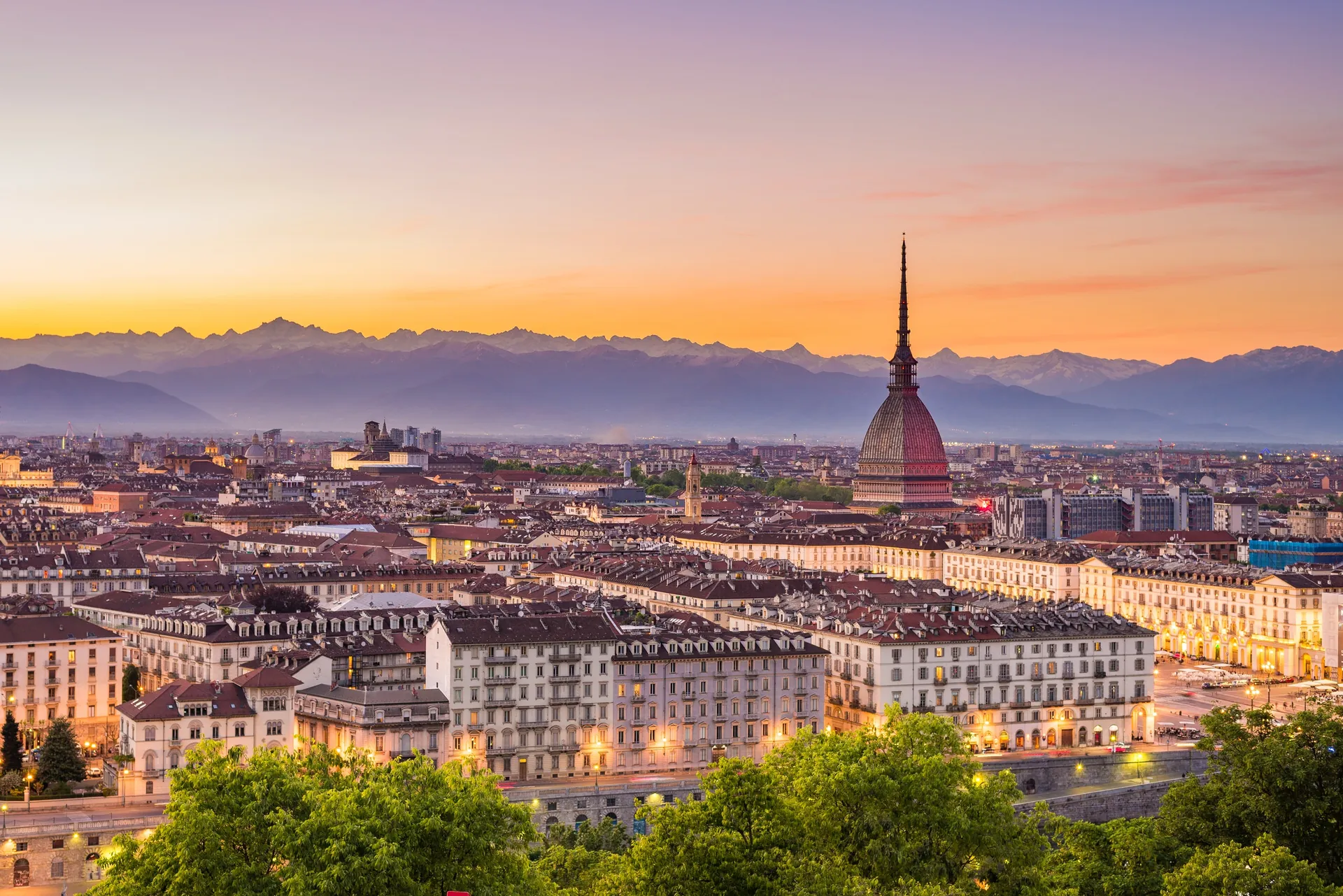
Turin, nestled in the northern region of Piedmont, is often celebrated for its refined elegance and architectural splendor. Known for its well-preserved 18th-century baroque and rococo buildings, Turin offers a unique blend of historical charm and contemporary vitality. The city center, a UNESCO World Heritage site, boasts grand boulevards, ornate palaces, and historic cafes.
Baroque Palaces
Explore Turin’s baroque palaces that reflect its regal past:
- Royal Palace of Turin: This magnificent palace, a symbol of royal power, offers stunning interiors adorned with lavish decorations and intricate frescoes.
- Palazzo Madama: A unique combination of medieval fortifications and baroque splendor, this palace houses the Civic Museum of Ancient Art.
- Palazzo Carignano: Notable for its undulating facade, this palace now serves as the Museum of the Risorgimento, detailing Italy’s unification.
Contemporary Art
Turin isn’t just about historical grandeur; it’s also a hub for contemporary art:
- Mole Antonelliana: An iconic skyline fixture housing the National Museum of Cinema with cutting-edge exhibits and panoramic views of the city.
- GAM – Galleria Civica d’Arte Moderna e Contemporanea: Home to a vast collection of 19th and 20th-century artworks, this gallery is a must-visit for art enthusiasts.
- Castello di Rivoli: Located just outside Turin, this castle-turned-museum is revered for its extensive contemporary art collections and innovative installations.
Accommodations
| Accommodation | Type | Price Range | Popular Amenities |
|---|---|---|---|
| Grand Hotel Sitea | Luxury Hotel | $$$ | Spa, Rooftop Terrace |
| NH Torino Lingotto Congress | 4-Star | $$ | Fitness Center, Free WiFi |
| Tomato Backpackers Hotel | Budget | $ | Lounge Area, Free Breakfast |
Dining Highlights
Savor Turin’s diverse culinary delights:
- Caffe Torino: Enjoy traditional coffee in a historic setting with beautiful Art Nouveau decor.
- Piola Da Celso: Experience authentic Piedmontese cuisine in a cozy, rustic atmosphere.
- Ristorante Consorzio: Renowned for its farm-to-table approach, offering locally-sourced ingredients and innovative dishes.
Transportation & Practical Tips
Exploring Turin is convenient thanks to its efficient public transportation:
- Buses and Trams: Reliable and extensive network covering the city.
- Metro: Single-line metro system connecting key areas quickly.
- Bikes: Rent a bike and explore the city’s many cycling paths, especially around Valentino Park.
Practical Tips:
- Visit in spring or autumn for mild weather and fewer tourists.
- Wear comfortable shoes as the city is best explored on foot.
- Purchase a Torino+Piemonte Card for free or discounted entry to main attractions and free public transport.
Turin perfectly balances historical allure with modern vibrancy, making it a captivating destination for diverse travelers.
Naples
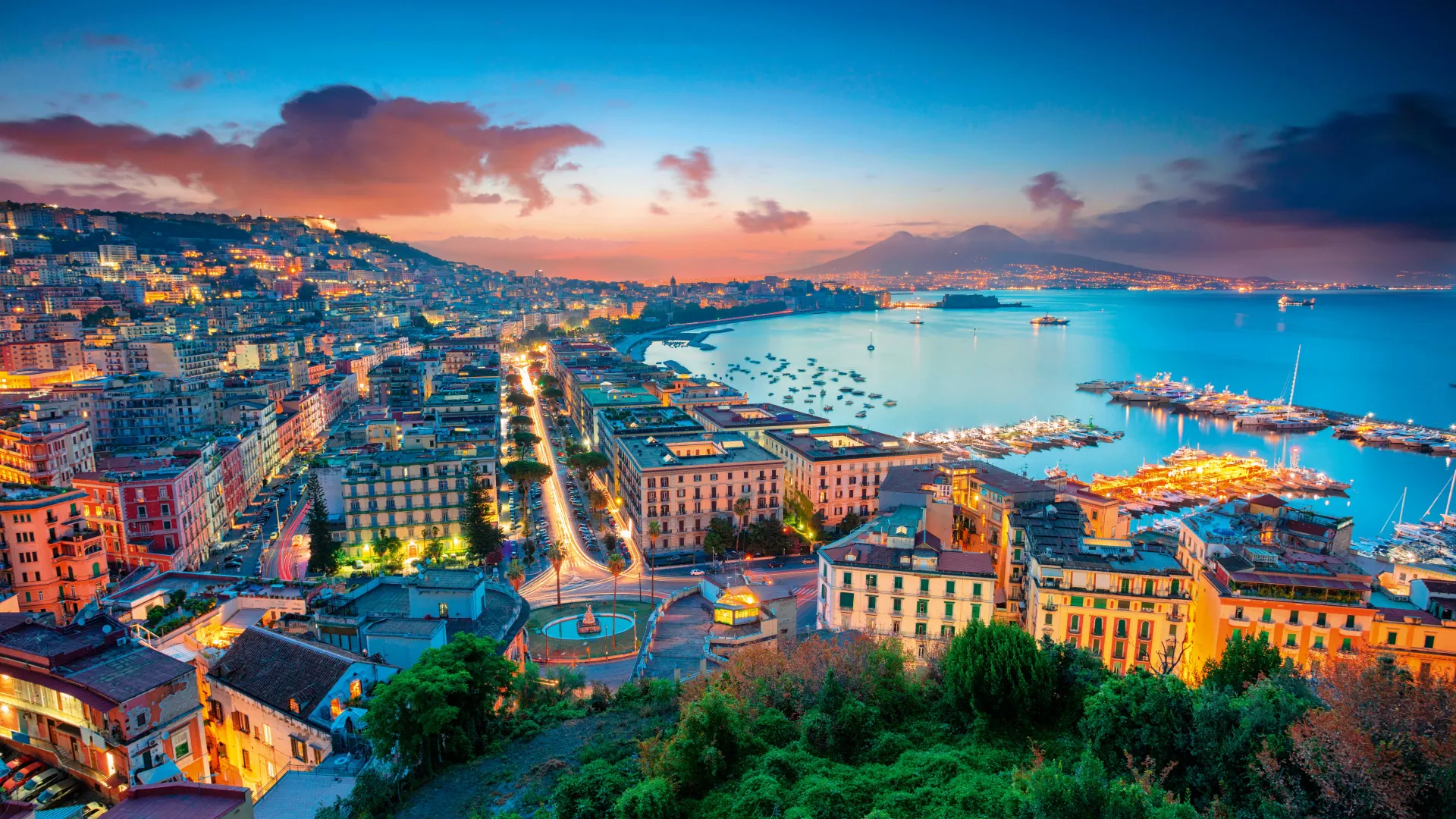
Naples might not always top the ‘prettiest’ cities lists due to its bustling atmosphere, but it’s a gem rich in history and coastal beauty.
Historical Sites
Naples brims with captivating historical landmarks. The Castel dell’Ovo, a medieval castle perched on the seafront, offers panoramic views. The Castel Nuovo, housing the City Museum of Castel Nuovo, showcases the city’s storied past. At the National Archaeological Museum of Naples, you’ll find a treasure trove of artifacts from Pompeii and Herculaneum.
Coastal Beauty
Naples’ coastline is simply stunning. The Bay of Naples provides breathtaking vistas of Mount Vesuvius and the idyllic island of Capri. Exploring this coastal region, you’ll be enchanted by the unique blend of natural beauty and historical significance.
In Naples, every corner tells a story. Walking through its streets, you’ll experience a vibrant mix of past and present, perfect for any traveler seeking an immersive adventure.
Milan
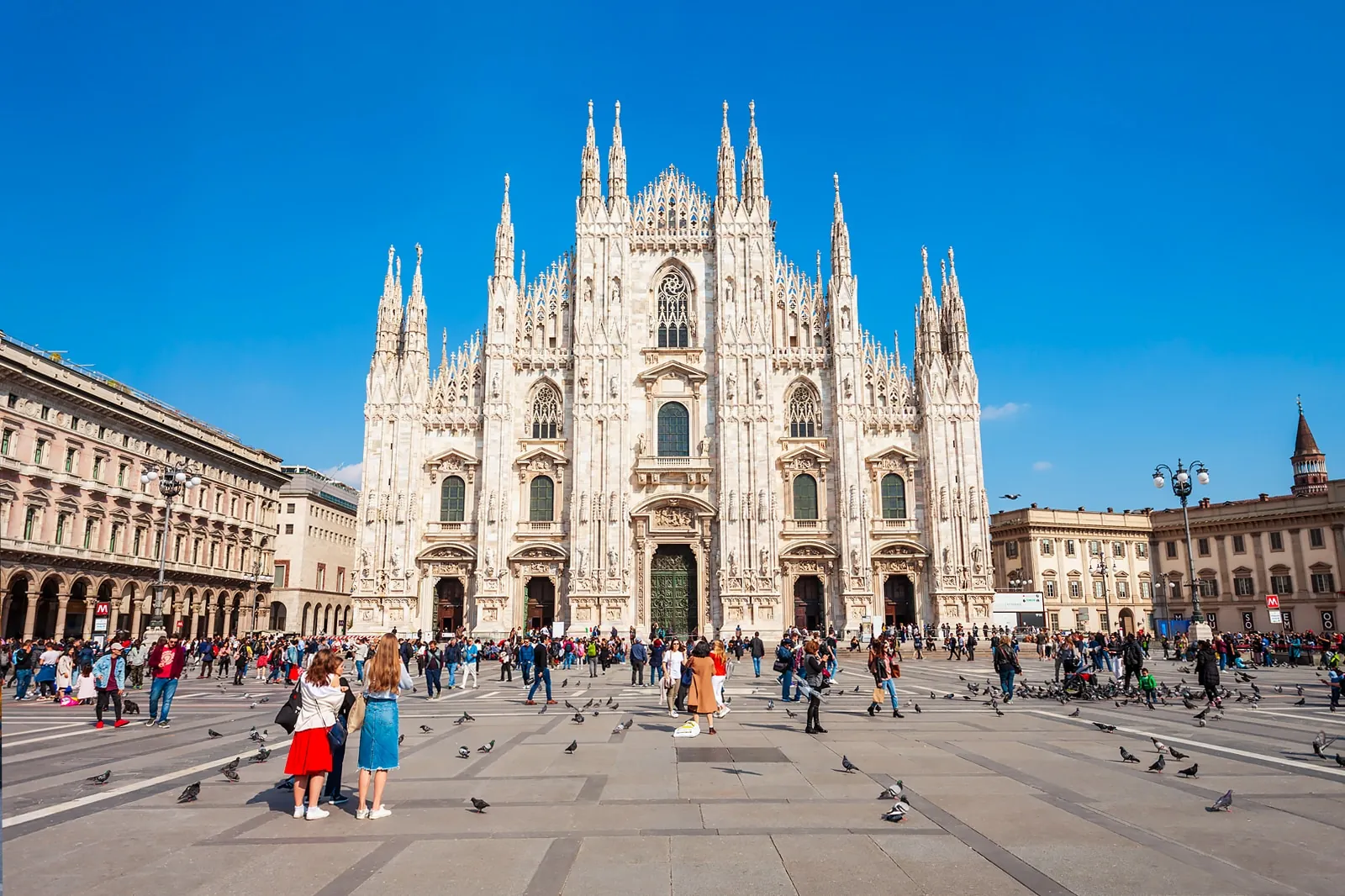
Milan, Italy’s dynamic metropolis, may not be the first city that comes to mind when you think of Italy’s picturesque destinations, but it holds its own with a unique blend of modernity and tradition. Set in the Lombardy region, Milan is known as a global design and fashion capital, drawing travelers year-round with its avant-garde vibe and historical landmarks.
Fashion Capital
Renowned globally as the “Fashion Capital” of Italy, Milan is the epicenter for high-end fashion and luxury shopping. Hosting biannual events like Milan Fashion Week, the city attracts fashion enthusiasts and industry professionals from around the world.
- Quadrilatero d’Oro: An exclusive district featuring upscale boutiques, including names like Prada, Gucci, and Versace.
- Galleria Vittorio Emanuele II: One of the world’s oldest shopping malls, this architectural marvel boasts luxury stores amidst its picturesque 19th-century glass-roofed arcade.
- Corso Buenos Aires: Stretching over 1.5 miles, it offers a mix of high-street and designer stores, perfect for fashionistas on a budget.
Modern Attractions
Milan is a city where the old meets the new seamlessly. While Ultramodern skyscrapers stand tall in the business district of Porta Nuova, the rest of the city retains a historic charm.
- Duomo di Milano: This stunning Gothic cathedral, with its intricate spires and statues, offers mesmerizing views of the city from its rooftop terraces.
- Sforza Castle: Once a symbol of Milanese power, this Renaissance fortress now hosts multiple museums and art collections.
- Teatro alla Scala: An iconic opera house, it boasts an elegantly adorned interior and a rich history of premiering works by Verdi and Puccini.
- CityLife: A futuristic district featuring innovative architecture by Zaha Hadid and Daniel Libeskind, with a massive shopping complex and beautifully landscaped public spaces.
Hidden Gems
Apart from its bustling streets and famous landmarks, Milan hides quieter, yet equally enchanting spots.
- Navigli Canals: Designed by Leonardo da Vinci, these canals offer a serene escape with their charming boutiques and cozy cafes.
- Brera District: Known for its bohemian atmosphere, art galleries, and the stunning Brera Art Gallery.
- Bosco Verticale: A pair of residential towers with over 900 trees and 11,000 plants integrated into the facade, earning it the “best tall building worldwide” award.
Accommodations
Milan caters to all types of travelers with its diverse accommodation options. Here’s a comparison of some top choices:
| Hotel Name | Location | Price Range (per night) | Amenities | Star Rating |
|---|---|---|---|---|
| Excelsior Hotel Gallia | Near Central Station | $300 – $850 | Spa, rooftop bar, luxury suites | 5 |
| The Square Milano Duomo | Near Duomo | $200 – $450 | Rooftop terrace, restaurant, modern design | 4 |
| Ostello Bello | Historical City Center | $35 – $120 | Free breakfast, communal kitchen, social events | Hostel |
Dining Highlights
Milan is a paradise for foodies, offering a blend of traditional and contemporary cuisine.
- Ristorante Cracco: Modern Italian dishes by Michelin-starred chef Carlo Cracco.
- Nobu Milan: Infamous for its blend of Japanese-Peruvian fare, frequented by celebrities.
- Luini Panzerotti: Don’t miss out on the local favorite, panzerotti, which is similar to a small calzone.
- Getting Around: Milan’s extensive public transport includes trams, buses, and an efficient metro system. Consider purchasing a Milano Card for unlimited travel.
- Best Time to Visit: Spring (April to June) and Fall (September to October) offer mild weather and fewer crowds.
- Sustainability Tips: Favor public transport over taxis, and dine at restaurants that use locally sourced ingredients.
Milan’s contemporary allure combined with its historical charm ensures that every visitor will find something to cherish. Whether you’re indulging in high fashion or exploring hidden streets, Milan promises an experience like no other.
Lecce
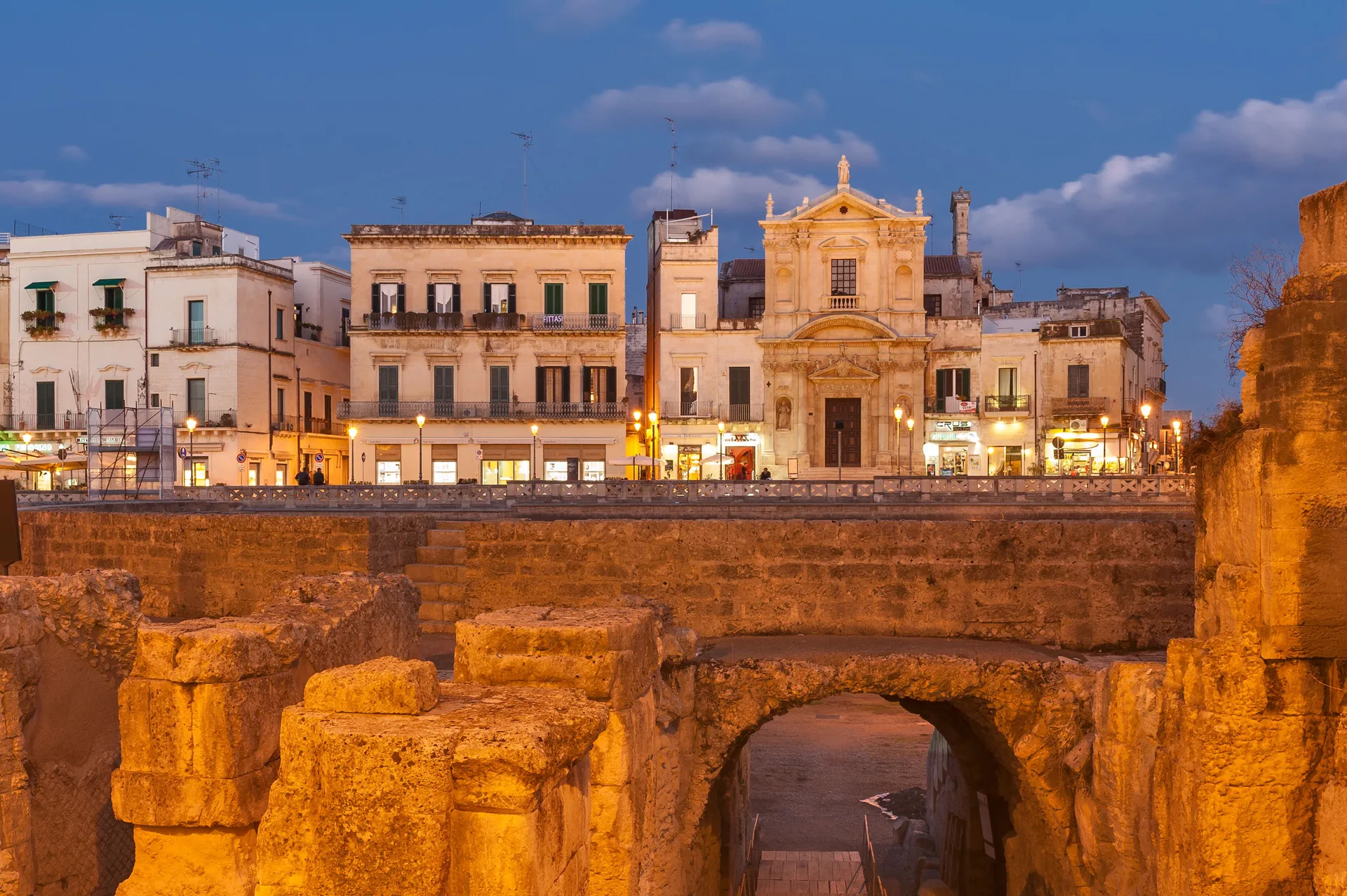
Known as the “Florence of the South,” Lecce captivates travelers with its stunning Baroque architecture and the unique charm of southern Italy. This city, characterized by warm Mediterranean weather, is best visited in spring and fall when temperatures are mild and ideal for exploration.
Baroque Architecture
Lecce’s Baroque architecture, often crafted from locally sourced “pietra leccese,” showcases elaborate designs. Here are the top attractions you shouldn’t miss:
- Basilica di Santa Croce: Admire the intricate façade with ornate sculptures and detailed stonework.
- Piazza del Duomo: Wander through this historic square, home to Lecce Cathedral and the Bishop’s Palace.
- Chiesa di San Giovanni Battista: Discover this lesser-known gem with its embellished exteriors and significant artworks.
Southern Italian Charm
Lecce embodies the essence of southern Italian charm with its rich history, vibrant culture, and picturesque streets. Lose yourself in the winding alleyways, where every corner reveals a piece of the city’s storied past.
Top Attractions
- Roman Amphitheater: Marvel at this ancient structure dating back to the 2nd century AD.
- Porta Napoli: Explore this grand triumphal arch, a gateway into Lecce’s historic center.
- Castello di Carlo V: Visit this imposing castle, offering panoramic views of the city.
Hidden Gems
- Palazzo Palmieri: A beautiful, lesser-known palace showcasing classic Lecce Baroque style.
- Jewish Museum: Investigate into Lecce’s Jewish history with artifacts and exhibits.
Accommodations
| Hotel Name | Price Range | Features |
|---|---|---|
| Patria Palace | $$$ | Historic hotel, rooftop terrace, central location |
| Risorgimento Resort | $$$ | Spa services, modern amenities, located in the historic center |
| Palazzo Rollo | $$ | Charming rooms, rooftop garden, close to major attractions |
| Casa dei Mercanti | $-$$ | Budget-friendly, spacious apartments, family-owned |
Dining Highlights
- Trattoria Le Zie: Indulge in authentic Pugliese cuisine, including orecchiette pasta and local wines.
- Il Gambero Rosso: Enjoy fresh seafood dishes and a waterfront view.
- La Cucina di Mamma Elvira: Savor traditional dishes with a modern flair in a cozy setting.
- Getting Around: Lecce is best explored on foot, but local buses are available for longer distances.
- Sustainability Tips: Opt for walking tours to minimize your carbon footprint and support local guides.
- Budget Considerations: Enjoy free entry to historic sites like Porta Napoli and discounted rates at major attractions during off-peak seasons.
Discover Lecce’s blend of history, culture, and unforgettable architecture. This city offers a unique travel experience, ensuring every moment spent here is truly memorable.
Catania
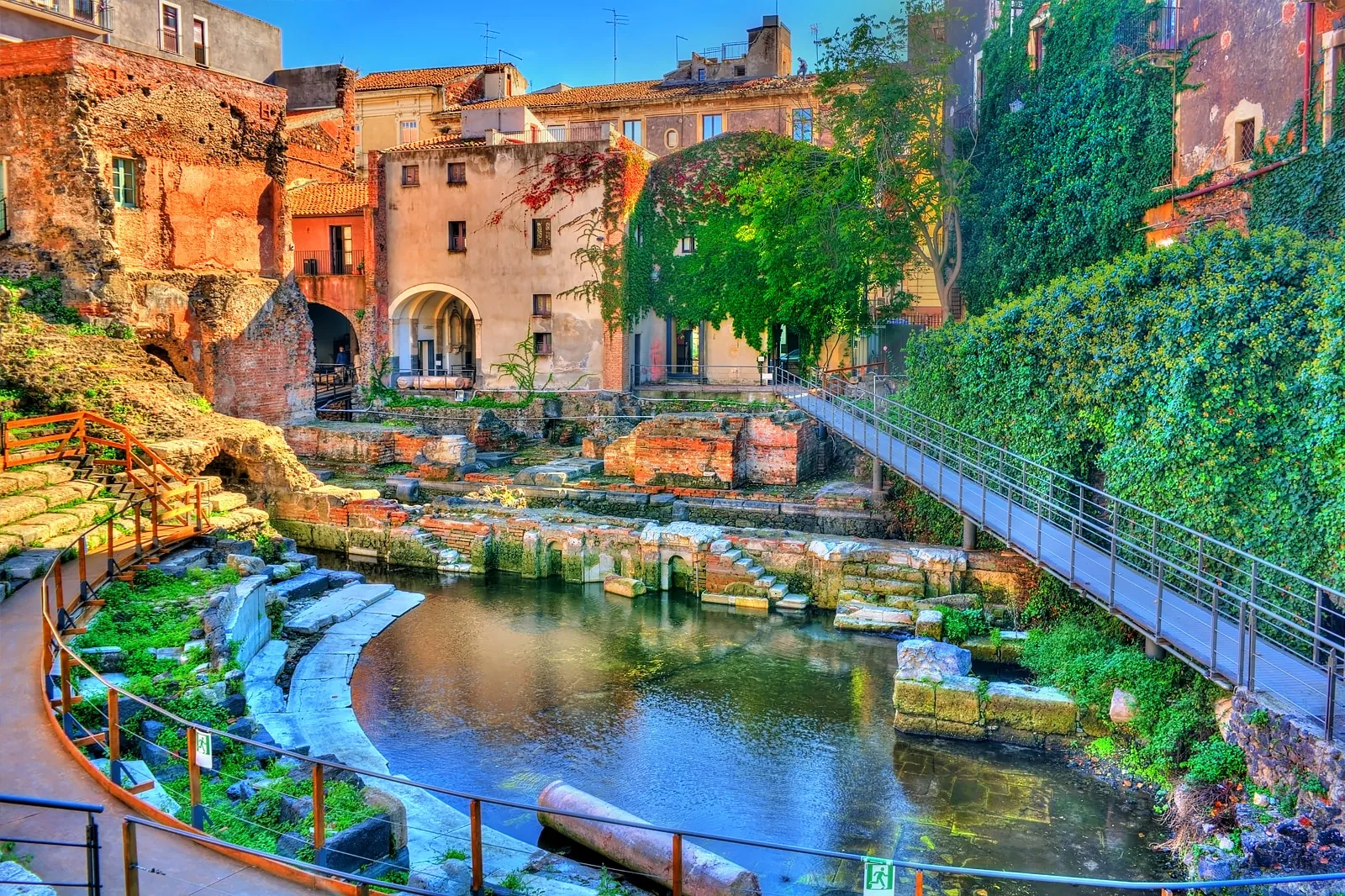
Nestled on the eastern coast of Sicily, Catania seamlessly blends historical allure with natural beauty. Known for its Baroque architecture and breathtaking views of Mount Etna, this city promises an unforgettable experience for every traveler.
Mount Etna Views
Enjoy unparalleled views of Mount Etna, Europe’s highest active volcano, right from the heart of Catania. The city affords unique opportunities to witness the volcanic world, whether you’re strolling through the historic center or dining at a rooftop restaurant. Consider visiting in spring or fall for clear skies and comfortable weather, making your Etna experience even more spectacular.
Baroque Buildings
Marvel at the incredible Baroque architecture as you explore Catania’s historic center. Rebuilt in the 18th century after a devastating earthquake in 1693, the city boasts numerous Baroque-style masterpieces. Don’t miss the Cathedral of Sant’Agata, a stunning tribute to the city’s patron saint, or the elegant Palazzo degli Elefanti, now serving as the city hall. The Monastery of San Benedetto, with its intricate interiors, offers another splendid example of Baroque artistry.
Top Attractions
- Cathedral of Sant’Agata: A magnificent structure with a rich history.
- Palazzo degli Elefanti: An architectural gem in the heart of the city.
- Monastery of San Benedetto: Offers an immersive experience into Catania’s Baroque past.
Hidden Gems
Discover off-the-beaten-path treasures like Via Crociferi, a street lined with beautiful Baroque churches, and the lesser-known Roman Amphitheater, which provides a peek into Catania’s ancient past. The Botanical Garden offers a peaceful retreat with diverse plant species and shaded paths, perfect for a tranquil afternoon.
Accommodations
| Hotel Name | Location | Price Range | Features |
|---|---|---|---|
| Palace Catania | Historic center | $$$ | Rooftop terrace, spa, luxury rooms |
| Hotel Villa Romeo | Near train station | $$ | Garden, bar, spacious rooms |
| Ostello degli Elefanti | City center | $ | Budget-friendly, social atmosphere |
Dining Highlights
Indulge in Catania’s culinary delights, from traditional trattorias to modern eateries. Relish arancini, pasta alla Norma, and fresh seafood at restaurants like Trattoria Da Antonio and Osteria Antica Marina. For dessert, try cannoli or granita, local favorites that are sure to satisfy your sweet tooth.
Transportation & Practical Tips
Easily navigate Catania using its efficient public transportation system, including buses and regional trains. Renting a car is also an option if you plan to explore the surrounding areas. Visit during spring (April-June) or fall (September-October) for the best weather and fewer crowds. Remember to pack comfortable shoes for exploring the cobblestone streets and historic sites.
Catania welcomes every type of traveler with its rich blend of history, culture, and natural beauty, ensuring a memorable visit every time.
Matera
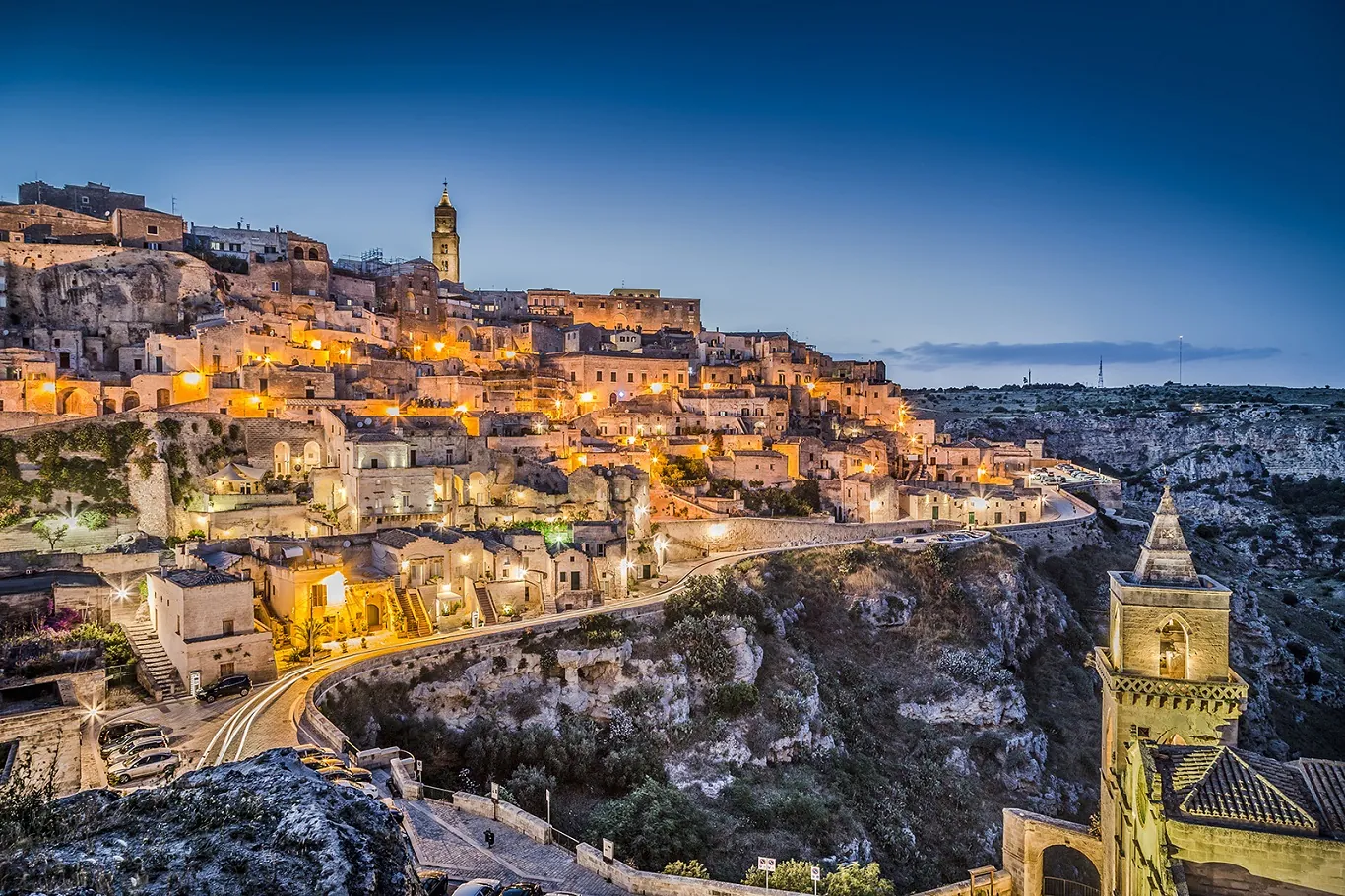
Nestled in the Basilicata region of southern Italy, Matera is a city like no other. With its ancient landscapes and historical allure, this UNESCO World Heritage Site never fails to impress.
Cave Dwellings
Matera’s claim to fame is its ancient cave dwellings, known as the Sassi di Matera. Carved into the limestone rock face, these homes date back to the Paleolithic era. Walking through the Sassi, you’ll feel transported back in time as you explore these fascinating abodes, many of which were inhabited until the mid-20th century. Today, some have been transformed into chic hotels and unique restaurants, offering a blend of history and modernity that’s hard to match.
Historic Churches
Matera is dotted with historic churches, many of which are ingeniously integrated into the caves or built into the rocky terrain. Take a step into the Rupestrian Churches to see ancient frescoes and intricate designs etched into stone. The Church of San Pietro Barisano, the largest rock church in Matera, offers a hauntingly beautiful glimpse into early Christian worship. Another must-see is the Madonna de Idris Church, which offers stunning views over the ancient cityscape.
Top Attractions
- Sassi di Matera: Explore the iconic cave dwellings that define Matera.
- Rupestrian Churches: Marvel at ancient frescoes and rock-hewn designs.
- Casa Grotta di Vico Solitario: Visit this furnished cave home for a glimpse into historic life.
- Palombaro Lungo: Discover the intricate water cisterns beneath the city.
Hidden Gems
- Crypt of Original Sin: Sometimes called the “Sistine Chapel of cave churches,” this place is adorned with stunning ancient frescoes.
- Casa Noha: An interactive museum housed in an old cave dwelling, offering multimedia presentations about Matera’s history.
Accommodations
Matera offers a range of accommodations to suit various preferences and budgets. Here’s a quick comparison:
| Name | Type | Key Features | Price Range |
|---|---|---|---|
| Sextantio Le Grotte della Civita | Luxury Cave Hotel | Luxurious cave rooms, historic ambiance | $$$$ |
| L’Hotel in Pietra | Boutique Hotel | Unique cave rooms, modern amenities | $$$ |
| Il Belvedere | Mid-Range Hotel | Panoramic views, close to main attractions | $$ |
| Agriturismo Matera | Farm Stay | Rural setting, local cuisine | $$ |
Dining Highlights
Matera’s dining scene blends traditional Southern Italian flavors with the unique atmosphere of cave restaurants. Must-try dishes include:
- Pane di Matera: This traditional bread is a local favorite.
- Orecchiette: Small ear-shaped pasta served with a variety of sauces.
- Pignata: A hearty lamb stew cooked slowly to perfection.
Transportation & Practical Tips
Getting around Matera is easiest on foot, especially in the Sassi areas where cars are restricted. Comfortable walking shoes are a must. If you’re planning to explore the surrounding region, renting a car is advisable since public transportation options are limited.
- Climate: The best times to visit are spring (April to June) and fall (September to October) for mild weather.
- Sustainability: Consider staying in eco-friendly accommodations and supporting local businesses to minimize your environmental impact.
- Budget: Allocate funds for both high-end dining experiences and more budget-friendly trattorias to get the full range of Matera’s culinary offerings.
Ravenna
Nestled in the Emilia-Romagna region, Ravenna is renowned for its stunning Byzantine mosaics and rich history. With its unique blend of ancient charm and contemporary culture, Ravenna offers visitors an engaging experience.
Byzantine Mosaics
Ravenna is world-famous for its breathtaking Byzantine mosaics, which showcase intricate designs and vibrant colors. You can marvel at these masterpieces in several key locations:
- Basilica di San Vitale: A 6th-century church, known for its stunning mosaics depicting biblical scenes and portraits of Byzantine emperors.
- Mausoleum of Galla Placidia: See the spectacular star-studded mosaic ceiling in this small yet remarkable building.
- Basilica di Sant’Apollinare Nuovo: Features a long procession of martyrs leading to the apse, adorned with golden backgrounds and intricate mosaics.
- Basilica of Sant’Apollinare in Classe: Located just outside Ravenna, this church’s apse mosaic shows a transfigured Christ against a brilliant blue sky.
Art and Culture
Ravenna’s art and culture extend beyond mosaics, providing a wealth of experiences for visitors:
- Teatro Alighieri: Attend an opera or theater performance in this historic venue.
- Dante’s Tomb: Visit the final resting place of Italy’s greatest poet, Dante Alighieri.
- MAR – Ravenna Art Museum: Explore contemporary and classical exhibits, offering insights into Italy’s rich artistic heritage.
- Classis Ravenna: Discover the city’s history through interactive exhibits and ancient artifacts.
Top Attractions
- Basilica di San Vitale: A must-see, famous for its mosaics.
- Mausoleum of Galla Placidia: Renowned for its stunning ceiling.
- Dante’s Tomb: Paying homage to the legendary poet.
- Teatro Alighieri: For a taste of Ravenna’s performing arts.
Hidden Gems
- Rocca Brancaleone: Explore this medieval fortress and its serene park.
- Domus dei Tappeti di Pietra: Discover intricate ancient floor mosaics preserved underground.
- Rasponi Crypt: An often-overlooked spot with mesmerizing mosaics and a lush garden.
Accommodations
| Accommodation | Type | Location | Price Range | Notable Features |
|---|---|---|---|---|
| NH Ravenna | Hotel | Near City Center | $$ | Comfortable rooms, modern amenities |
| Ai Giardini di San Vitale | B&B | Close to Basilica di San Vitale | $ | Cozy ambiance, personal touch |
| Palazzo Bezzi | Luxury Hotel | City Center | $$$$ | Rooftop terrace, spa |
| Ostello Dante | Hostel | Budget option | $ | Friendly staff, close to attractions |
Dining Highlights
- Ca’ de Ven: Savor traditional Romagna cuisine in a charming, historic setting.
- Osteria del Tempo Perso: Enjoy innovative dishes with local ingredients.
- Ristorante al 45: Ideal for seafood lovers, offering a rich selection of fresh dishes.
- Gelateria il Gallo: Indulge in some of the best gelato in the city.
- Getting Around: Bike rentals are popular due to the city’s flat terrain. Local buses and taxis are also available.
- Best Time to Visit: Spring and fall offer mild weather and fewer tourists, making sightseeing more enjoyable.
- Sustainability: Opt for bike rentals and public transportation to reduce your carbon footprint. Support local markets and eateries to contribute to the local economy.
- Budget Tips: Explore free attractions like Dante’s Tomb and the city parks. Staying in B&Bs or hostels can help stretch your budget further.
Ravenna’s rich artistic heritage, impressive mosaics, and vibrant culture make it a must-visit destination in Italy. Whether you’re exploring historical sites or enjoying local cuisine, Ravenna promises an unforgettable experience.
Conclusion
Italy’s cities offer an unparalleled blend of history, culture, and natural beauty. From the timeless allure of Rome and Venice to the Renaissance splendor of Florence and the medieval charm of Siena, each city presents a unique story waiting to be discovered.
Whether you’re exploring the gastronomic delights of Bologna or the coastal beauty of Genoa, Italy promises unforgettable experiences. The romantic ambiance of Verona, the artistic heritage of Turin, and the Baroque elegance of Lecce further highlight the country’s diverse appeal.
So pack your bags and begin on a journey through Italy’s prettiest cities. Each destination offers its own captivating charm, ensuring that your Italian adventure will be one to remember.
Frequently Asked Questions
What are the must-visit cities in Italy?
Italy offers numerous captivating cities, including Rome, Venice, Florence, Milan, and Naples. Each city boasts unique attractions, from historic landmarks to stunning landscapes, ensuring unforgettable experiences for every traveler.
Which city in Italy is best for exploring historical landmarks?
Rome is renowned for its rich history and iconic landmarks. Key sites include the Colosseum, the Roman Forum, the Pantheon, and the Sistine Chapel, each reflecting significant aspects of Rome’s architectural and artistic heritage.
What makes Venice a unique travel destination?
Venice is famous for its beautiful canals and historic charm. The Grand Canal, St. Mark’s Basilica, and the Doge’s Palace highlight Venice’s architectural splendor, offering a magical journey through its timeless beauty.
What attractions can be found in Florence?
Florence, the pinnacle of Renaissance history, is home to the Uffizi Gallery, Palazzo Vecchio, Duomo di Firenze, and Ponte Vecchio. These sites, combined with the city’s vibrant cultural scene, make Florence a captivating destination.
Why should travelers visit Bologna?
Bologna offers a unique blend of history, architectural beauty, and culinary delights. Iconic attractions include the Two Towers, Piazza Maggiore, and the Quadrilatero market district, known for its traditional Italian cuisine.
What are the key highlights of Siena?
Siena is known for its medieval charm and key attractions like the Siena Cathedral, Torre del Mangia, and Piazza del Campo. The city also hosts the Palio di Siena, a traditional horse race that showcases the vibrant local culture.
What romantic sites can be found in Verona?
Verona is famous for its romantic associations with Shakespeare’s “Romeo and Juliet.” Key attractions include Casa di Giulietta, the Arena di Verona, and Piazza delle Erbe, offering a blend of history and romance.
What makes Genoa a notable destination?
Genoa stands out for its historical grandeur and coastal beauty. Highlights include the UNESCO-listed Rolli Palaces on Via Garibaldi, charming medieval alleys, and the city’s famous culinary offerings like pesto alla genovese.
What are the main attractions in Lucca?
Lucca is celebrated for its Renaissance charm. Visitors can explore the city’s 16th-century walls, Basilica of San Frediano, Duomo di San Martino, Piazza dell’Anfiteatro, and the Guinigi Tower, each offering unique insights into Lucca’s history.
Why visit Turin?
Turin, known for its Baroque and Rococo architecture, features grand boulevards and historic palaces like the Royal Palace of Turin and Palazzo Madama. The city balances historical allure with modern culture and vibrant contemporary art scenes.
What draws visitors to Naples?
Naples offers a rich mix of history and coastal beauty. Key attractions include Castel dell’Ovo, the National Archaeological Museum, and the stunning views of Mount Vesuvius from the Bay of Naples, providing an immersive travel experience.
What makes Milan a prominent travel destination?
Milan, the “Fashion Capital” of the world, blends modernity with tradition. Notable sites include the Duomo di Milano, Sforza Castle, Galleria Vittorio Emanuele II, and the Navigli Canals, offering diverse experiences for every traveler.
Why should travelers explore Lecce?
Lecce, known as the “Florence of the South,” captivates with Baroque architecture, including the Basilica di Santa Croce and Piazza del Duomo. The city’s vibrant culture and warm climate make it an ideal destination in southern Italy.
What are the highlights of Catania?
Catania, located in Sicily, features Baroque architecture and views of Mount Etna. Key sites include the Cathedral of Sant’Agata, Palazzo degli Elefanti, and unique volcanic landscapes, offering a blend of history and natural beauty.
What makes Matera a must-visit destination?
Matera, a UNESCO World Heritage site, is renowned for its ancient cave dwellings, the Sassi di Matera. Visitors can explore historic churches, such as the Rupestrian Churches, and taste traditional Southern Italian cuisine.
Why visit Ravenna?
Ravenna is famous for its stunning Byzantine mosaics and rich history. Key attractions include the Basilica di San Vitale and the Mausoleum of Galla Placidia. The city offers a vibrant cultural experience, making it a must-visit in Italy.

